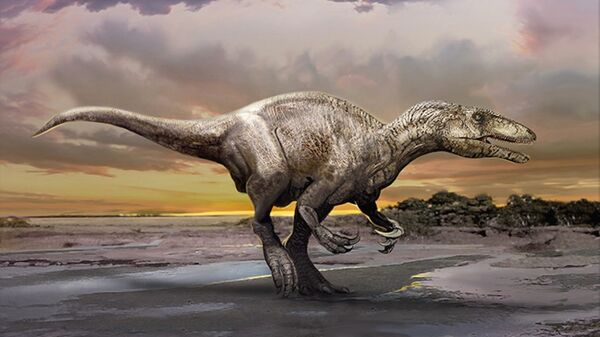Scientists found 133-million-year-old fossilized dinosaur brain tissue!!! Seriously. @Cambridge_Uni https://t.co/yX4gfqlQz3 pic.twitter.com/UtNJnsWOiC
— Quirks & Quarks (@CBCQuirks) 29 октября 2016 г.
The fossil, which looks a lot like a common pebble, was actually found back in 2004 by amateur fossil hunter Jamie Hiscocks. But it was not until now that a team of scientists, including David Norman of the University of Cambridge and the late Martin Brasier of the University of Oxford, could identify the discovery as world's first fossilized dinosaur brain. According to the scientists, the brain belonged to Bexhill iguanodontian, a close relative of Iguanodon.
"It was Martin who first noticed the fossil's shiny surface. When I saw it, and I noticed the surface also showed wrinkles in its fabric similar to membranes, I got excited. We both did. Proving the fossil was from a dinosaur's brain was a long, but rewarding, process," Norman said, referring to his co-researcher who led the work until his death in 2014.
A team of researchers from the University of Western Australia has been brought in to make high-resolution images of parts of the brain. Captured in the stone, the brain structure, and in particular the arrangement of its outer layers, displays remarkable similarity to modern birds and crocodiles, the scientists say, adding that it likely functioned in a similar fashion.
You can clearly see blood vessels in this 130-million-year-old dinosaur brain fossil https://t.co/S8DSbM5ppb pic.twitter.com/XEpMr7B0PG
— Brian Resnick (@B_resnick) 27 октября 2016 г.
Norman and colleagues presented their research at the international meeting of the Society of Vertebrate Paleontology in Salt Lake City, Utah. More details of their work will be released in an article that will be published in a Special Publication of the Geological Society of London.
"Brain tissues are incredibly fragile and it is quite incredible that the animal died in circumstances that uniquely led to their preservation — through a process of 'pickling' and then mineral replacement," Norman said.
According to Norman, the dinosaur likely died trapped in a swamp; in a fortunate turn of events (for us, that is), the reptile fell head first into the mud at the bottom, an acidic goop mostly devoid of oxygen, a gas that facilitates tissue decomposition. This environment provided perfect conditions for the soft tissue to be replaced with minerals that perfectly copied the structure of the brain, the scientists explain.
"In a way it is like recreating a forensic scene. How could the brain have been preserved? You have a dead body and you have to explain how it got there," Norman said, noting that understanding the circumstances of the reptile's death was crucial to understanding how the brain came to be preserved so well.


